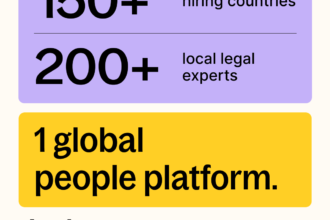Expanding into new international markets brings exciting opportunities but also complex payroll, compliance, and tax challenges. Businesses must develop a resilient global payroll strategy that ensures compliance, cost efficiency, and seamless employee payments.
This blog explores the key components of a strong global payroll strategy and how businesses can optimize their payroll operations while expanding.
1. The Need for a Robust Global Payroll Strategy
When companies expand across multiple countries, they face:
✔ Diverse Labor Laws – Every country has unique tax codes, social security requirements, and labor laws.
✔ Payroll Compliance Risks – Mistakes in tax withholding or reporting can lead to hefty fines and legal issues.
✔ Cross-Border Payment Complexities – Managing multiple currencies, banking restrictions, and exchange rates.
✔ Data Security & Employee Confidentiality – Countries have strict regulations like GDPR (Europe), PIPL (China), and HIPAA (U.S.).
Without a well-defined payroll strategy, businesses risk delays in employee payments, compliance penalties, and reputational damage.
2. Key Elements of a Resilient Global Payroll Strategy
A. Compliance-First Approach
✔ Stay updated with local tax regulations, employment laws, and reporting deadlines.
✔ Implement an automated compliance system that ensures accurate payroll processing.
✔ Partner with a Global Employer of Record (EOR) for compliance management.
💡 Example: Companies operating in Europe must comply with GDPR while handling employee data, ensuring secure payroll processing.
B. Centralized Payroll Management
✔ Use a single payroll system that manages multi-country payroll from one platform.
✔ Ensure standardized payroll processes across all locations.
✔ Integrate payroll with HR, accounting, and compliance software.
💡 Example: Businesses with employees in Asia, North America, and Europe benefit from a centralized cloud payroll system that handles different tax structures.
C. Multi-Currency & Cross-Border Payment Solutions
✔ Choose a payroll provider that supports multi-currency payments.
✔ Automate currency conversion and real-time payments.
✔ Reduce high transaction fees by using global payment networks.
💡 Example: Payroll providers like Deel and Papaya Global offer multi-currency payment options for international employees and contractors.
D. Payroll Automation & AI-Driven Insights
✔ Use AI-powered payroll systems for accurate salary calculations.
✔ Automate tax deductions, social security contributions, and benefits management.
✔ Leverage AI analytics to forecast payroll costs and optimize workforce planning.
💡 Example: AI-driven payroll systems detect anomalies in tax calculations, preventing overpayments or underpayments.
3. Benefits of a Strong Global Payroll Strategy
✔ Ensures Full Compliance – Reduces legal risks and regulatory penalties.
✔ Enhances Employee Satisfaction – Employees receive timely and error-free salary payments.
✔ Saves Time & Costs – Automation reduces manual errors and streamlines payroll processing.
✔ Improves Decision-Making – AI-driven payroll analytics provide financial insights for business expansion.
4. The Future of Global Payroll Strategies
As global business landscapes evolve, companies must embrace:
✔ Blockchain Payroll Solutions – Secure and transparent smart contract-based salary payments.
✔ Instant Payroll Processing – Real-time, cross-border payments for employees and contractors.
✔ AI-Driven Payroll Audits – Automated compliance audits to reduce tax risks and fraud.
Conclusion
A resilient global payroll strategy is essential for businesses expanding across borders. By leveraging automation, AI, and centralized payroll systems, companies can ensure compliance, efficiency, and cost-effective payroll management.





